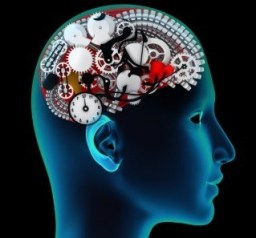Memory recall involves simultaneous activity across brain regions
 A new article published on January 27 in the journal Nature Neuroscience (Andrew J Watrous, Nitin Tandon, Chris R Conner, Thomas Pieters, Arne D Ekstrom. Frequency-specific network connectivity increases underlie accurate spatio temporal memory retrieval. Nature Neuroscience, 2013; DOI: 10.1038/nn.3315) states that memories of time and of place were associated with different frequencies of brain activity.
A new article published on January 27 in the journal Nature Neuroscience (Andrew J Watrous, Nitin Tandon, Chris R Conner, Thomas Pieters, Arne D Ekstrom. Frequency-specific network connectivity increases underlie accurate spatio temporal memory retrieval. Nature Neuroscience, 2013; DOI: 10.1038/nn.3315) states that memories of time and of place were associated with different frequencies of brain activity.Working with patients with electrodes implanted in their brains, researchers at the University of California, Davis, and The University of Texas Health Science Center at Houston (UTHealth) have shown for the first time that areas of the brain work together at the same time to recall memories. The unique approach promises new insights into how we remember details of time and place.
Previous work has focused on one region of the brain at a time, and the new results show that memory recall involves simultaneous activity across brain regions.” Ekstrom is senior author of a paper describing the work published Jan. 27 in the journal Nature Neuroscience.
The research team placed electrodes on the 6 patients’ brains inside the skull – the electrodes remained in place for one to two weeks for monitoring. Using a laptop computer, the patients learned to navigate a route through a virtual streetscape, picking up passengers and taking them to specific places. Later, they were asked to recall the routes from memory. Correct memory recall was associated with increased activity across multiple connected brain regions at the same time, rather than activity in one region followed by another. The analysis did show that the medial temporal lobe is an important hub of the memory network, confirming earlier studies. Memories of time and of place were associated with different frequencies of brain activity across the network – using different frequencies could explain how the brain codes and recalls elements of past events such as time and location at the same time. “Just as cell phones and wireless devices work at different radio frequencies for different information, the brain resonates at different frequencies for spatial and temporal information,” stated Arne Ekstrom. They hope to explore further how the brain codes information in future work. The neuroscientists analyzed their results with graph theory, a technique that is being used for studying networks.




















